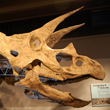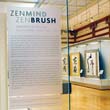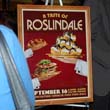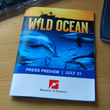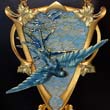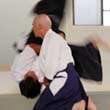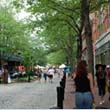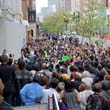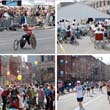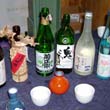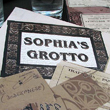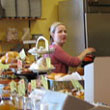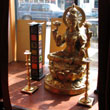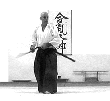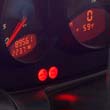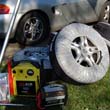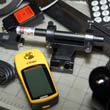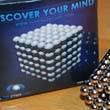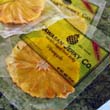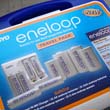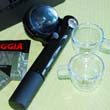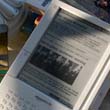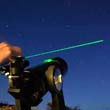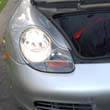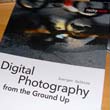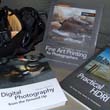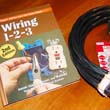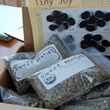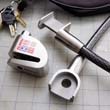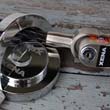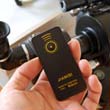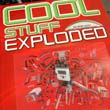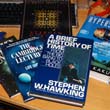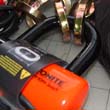|
|
|
RainyDayMagazine's content can now be licensed for your print magazine or web site. Please contact us directly here. If you want to see something reviewed, then drop us a note with a link and we'll be happy to take a look.
|
| |
November 22-23,2008 (WeekendEdition) |
The Bubble Tree was easy to unpack, set up, and shape. All that was left to do was fill the trunk with water and flip a switch. It took about 8 liters of water to fill.
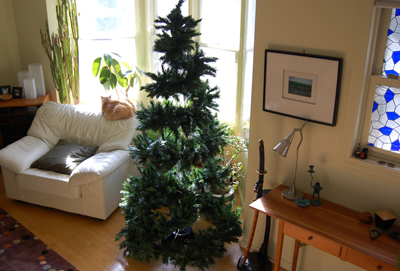
As the tree is over 6' tall, in order to fill the trunk with water a small ladder was needed to get to the top. Our recommendation is to leave about 3" of space if you want to use the max "bubbling" setting.

Since the lights have been pre-strung, the interns just had to plug it in, choose a color, and adjust the rate of the bubbles. Getting the lights to work was even easier than putting up the tree.
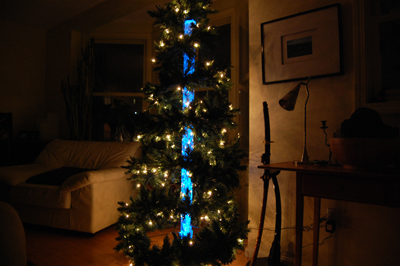
The "bubbling" effect is REALLY REALLY cool. We flipped through the colors, checked out the effect at different bubbling rates, and settled on a combination we liked best. The effect is best when seen in the dark. Some colors work better than others, but each is its own festival of lights :-)

The Blue Lights/Max Bubbles is a nice combination, but we think the red is the most festive. Of course, since changing the colors is so easy, we will probably rotate colors as our whim dictates.

At the maximum setting, the bubbles will disperse more of the light near the bottom of the trunk. The intensity of the color will gradually fade toward the top. This in itself is a pretty nice effect. To get a more "solid" color over the entire trunk, just decrease the rate of the bubbles.

We are the first one in the area with a fully lit Christmas tree. We know... it's not even Thanksgiving yet. But hey, if you had a Bubble Tree, we guarantee that you will wish you could leave it up all year :-) [Permalink] - Bubble Tree FirstLight
|
November 21,2008 (PhysicsFriday) |
We wish we were better at explaning physics to our friends and family because we LOVE physics. A lot of our attempts at explaining physics involve too much talking and too many analogies that don't make sense to the explainee (most specifically, according to our highly esteemed English-major copywriter, "It's like water flowing through a pipe" which now makes her run from the room upon hearing those words). This is why we were so excited when we heard about O'Reilly's Head First series of books.

The Head First approach to teaching is to use what is known about how people learn and to leverage that knowledge. Learning is a multi-sensory experience. The more those various senses are engaged, the better we learn.


Head First's idea is to make things more visual, explain ideas in a conversational style, make it personal, get the reader to think deeply, keep the reader's attention, and to make the content engage the reader at an emotional level. It's a tall order, but we think it is a great way to teach and a fun way to learn.

What will you learn from this book? The first thing you will learn is Physics is easy to understand when explained by people who know how to explain things. If you want to know any more, you will have to go buy the book. But you can be sure "It's like water flowing through a pipe" is in there somewhere. [Permalink] - Head First Physics
|
|
November 20,2008 (MakeATreeThursday) |
The interns were in early today and got to work assembling the Bubble Tree. The basic steps were pretty simple: connect the tubes for the trunk, put the trunk into the base, unfurl the branches, insert starting from the top and work your way to the bottom. The assembly process was actually that simple, but we thought some photos would make things even clearer.
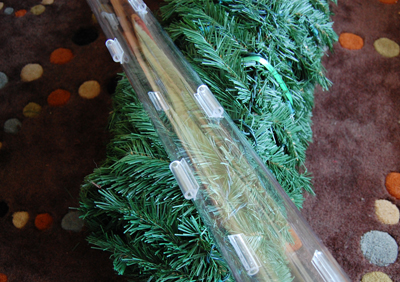
The tree's "branches" is actually one long garland, and came rolled up in a bundle. The trunk is a clear plexiglass column with small tubes on the outside that the garland hooks into. Unfurling the garland is best done when the trunk and base have been assembled. The lights are already pre-threaded into the branches, a HUGE time saver.

The bottom of the plexiglass column has two small outlets which get connected to the water pump housed in the base. Contained in the base are also multi-color LEDs. The lighting effect will be created by the LEDs shining up the water-filled trunk, but more on that later.

Once the tubes are connected, the column is inserted and locked into place with a turn. The instructions recommend we water-test the assembly, but the interns skipped this step as they were too impatient to see what the tree looked like when assembled.

Unfurling and attaching the coil of green garland took two people. It was quite easy once they got the hang of it. The process started with placing the top cap into position and attaching the braces into ALL of the holders on the trunk. We found things looked better if the brace was underneath the garland rather then placed on top of it.

At first we were concerned about making sure the garland was not twisted, but soon realized it made no difference. All of the individual branches may be repositioned for a fuller look. The assembled tree stands over 6' tall and is very sturdy. It gets it "tree" shape from the spiraling cone of thick green garland (and the lower brace arms being longer) and is quite cool looking.

We'll do the water test and tree-lighting this weekend. If you have already decided you want one, just give the folks at Season Dreams the code 'RainyDay' when you order and they will knock 15% off the price of the tree! [Permalink] - Bubble Tree Assembly
|
November 19,2008 (WowUsWednesday) |
Some of us here were alive in the 60's. A few of us can even remember what happened in the 60's. When a reader sent us a link to NASA's newly re-digitized version of the EarthRise photo, one recognized it as the iconic image from the Apollo 8 mission.
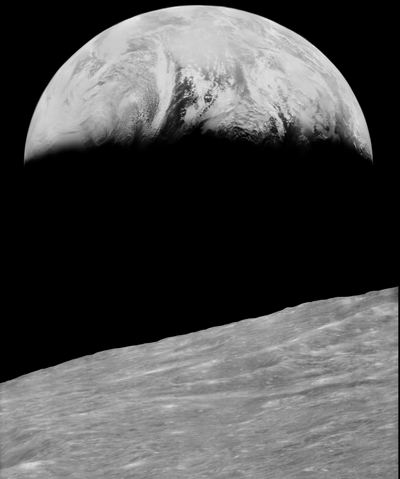
However, our resident philatelist was not too sure. He claimed it was different than the stamp which was released in 1969. The next day, he brought in the stamp to prove he was not just talking crazy. He then proceeded to "treat" everyone to an unexpected and somewhat lengthy dissertation on the joys of stamp collecting.
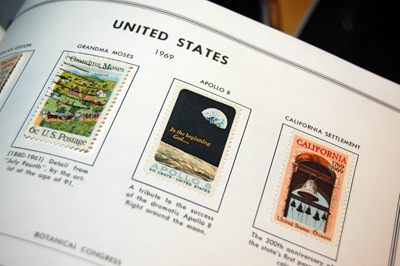
The b&w image of EarthRise was actually from a 1966 Lunar Orbiter mission. It was the first EarthRise image ever. NASA re-released the photo as part of their Lunar Orbiter Image Recovery Project. Go here to see more cool "recovered" NASA moon photos.
BTW, fascinating as stamp collecting may be, we all agreed that it was definitely not as cool as collecting coins, especially if the coins were krugerrands :-) [Permalink] - Earth Rise
|
November 18,2008 (BubbleTreeTuesday) |
Every Holiday Season, readers have asked us to review artificial Christmas trees. We have resisted because we have always had live trees in the reception area at RainyDayMagazine. However, when we got talking about it this year, we realized that many of us grew up with artifical Christmas trees. So this year and for the next few years, we WILL be doing selective reviews of artificial trees.
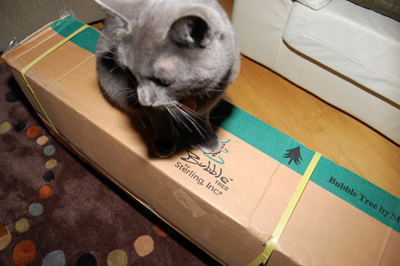
Our first tree is a hot new product called the Bubble Tree, available from Season Dreams. We were intrigued by this tree because it's description was so un-tree like: new tree colors, improved LED lights, and a bubbling tree trunk which changes colors.

We got a 6 1/2' green Bubble Tree with clear lights. It arrived in a box about 7' long weighing almost 30 lbs. It came complete with base, clear acrylic trunk, and spiral shaped pre-lit foliage.

The interns are pretty excited about putting up the Bubble Tree! We will have a full write-up on the setup soon. In the mean time, check out all the different colors available at Season Dreams. If the Bubble Tree is too edgy for you, they also sell more traditional-looking artificial ones. [Permalink] - Bubble Tree
|
|
November 17,2008 (MoreMagnetsMonday) |
There are two popular suppliers of these spherical magnets on the Web. The small one is from NeoCube. The larger one from CyberCube. While they look similar, the "play" quality of the two sizes are distinct. We would not characterize one as better than the other, just different.
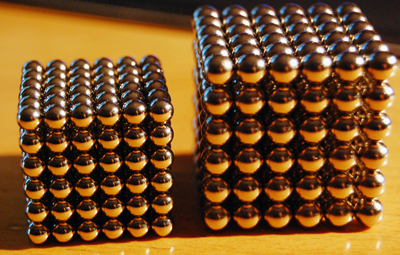
The larger one is easier to hold, and its magnetic fields are stronger. The stronger force makes certain shapes harder to create. The smaller one makes some shapes more easily, but its weaker magnetic field doesn't hold as well, so unless the spheres are aligned precisely, the intended shape can be easily distorted.
The more we play with these Neodymium spherical magnets, the more we became entranced by the different shapes which emerge as the spheres align themselves. One interesting result from all this "magnet-play" is an increased appreciation of how magnetic attraction can influence the strength and stability of similar shapes.

The three columes may look similar, but the alignment of the spheres give them totally different structural properties. The left one will flatten out much easier than the center one. The one on the right has a "twist" in it and will bend differently than the other two. Another observation is different shapes will emerge from simple combinations. The four circles assumed a not-readily-apparent hexagonal configuration when placed inside one another.

These magnets are wonderful toys, but they are not suitable for small childern for obvious reasons. Accidentally swallowing one may not be much of a hazard, but two of them inside the body can be a bit problematic, since they will be attracted to each other, even if human bits are in between. [Permalink] - More Magnets
|
|
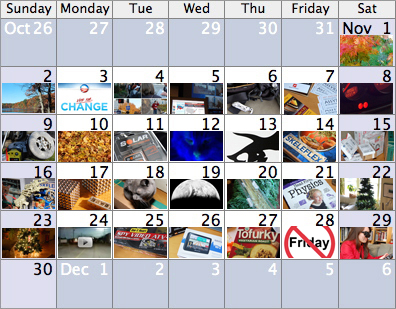
[Dec] [Nov] [Oct] [Sep] [Aug] [Jul]
[Jun] [May] [Apr] [Mar] [Feb] [Jan]
....... 2007 ......
[Dec] [Nov] [Oct] [Sep] [Aug] [Jul]
[Jun] [May] [Apr] [Mar] [Feb] [Jan]
....... 2006 .......
[Dec] [Nov] [Oct] [Sep] [Aug] [Jul]
[Jun] [May] [Apr] [Mar] [Feb] [Jan]
....... 2005 .......
[Dec] [Nov] [Oct] [Sep] [Aug] [Jul]
[Jun] [May] [Apr] [Mar] [Feb] [Jan]
....... 2004 .......
[Dec] [Nov] [Oct] [Sep] |
|
|


